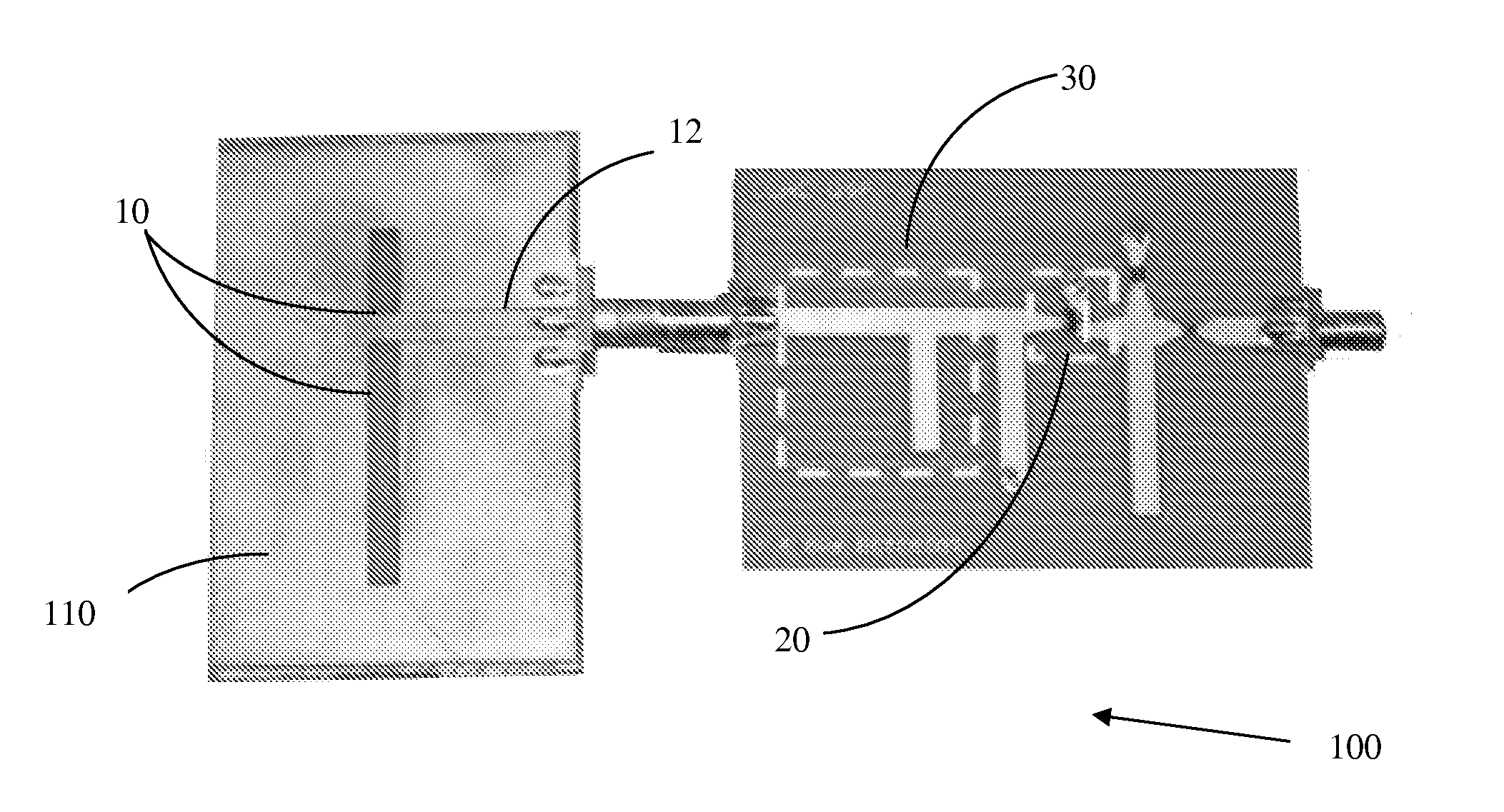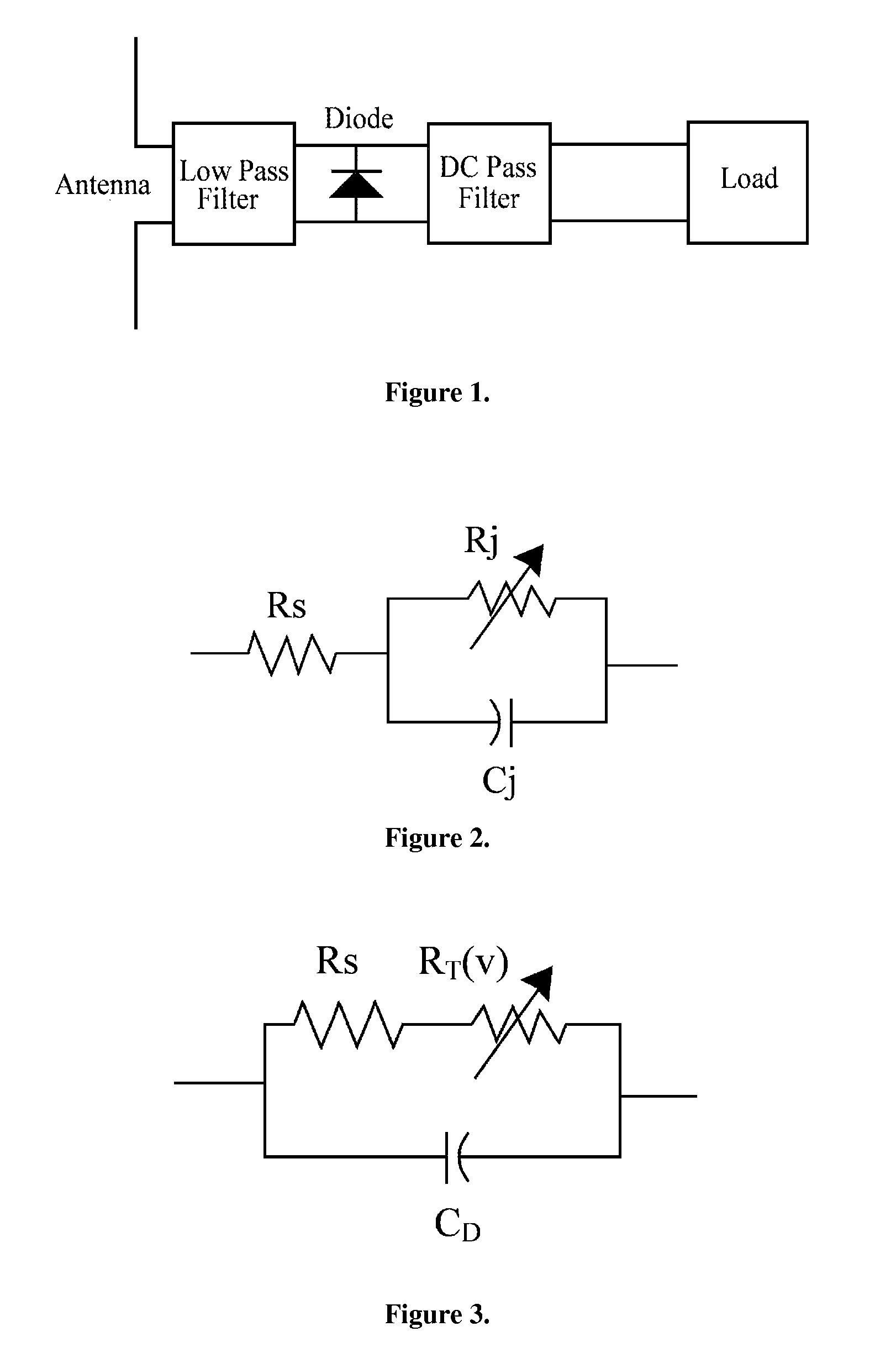Rectenna solar energy harvester
- Summary
- Abstract
- Description
- Claims
- Application Information
AI Technical Summary
Benefits of technology
Problems solved by technology
Method used
Image
Examples
example 1
[0060]Energy conversion device 100 comprises antenna 10 or antenna array 10a connected to rectifier 20, forming a rectenna Only a single optical antenna 10 is depicted in FIG. 10, however an array of optical antennas 10a exists. The rectenna comprises an antenna directly engaged to a rectifier 20, or connected to rectifier 20 via transmission lines 30. The rectifier 20 is a metal-insulator-metal diode. Energy conversion device 100 may be connected in parallel, series, or hybrid, such that the currents generated merge, resulting in a useful setup when producing large dimension single energy conversion device 100 is practically prohibitive. The setup allows multiple energy conversion devices to be further integrated into large-scale assemblies where neighbor devices share a common transmission cable 31 to simplify connections. The energy collected by the antennas 10 will be concentrated in the transmission lines 30, whereby the energy is rectified and converted into electricity. The t...
example 2
[0070]A rectenna was placed behind (underneath) a photovoltaic (PV) module. Assuming the conversion efficiency of the PV module is 10-20%, then approximately 80-90% of the solar energy is converted to heat. If a PV panel operates under one sun conditions at 60 degrees centigrade, the panel back surface radiates about 700 W / m2. Assuming the rectenna conversion efficiency is 40%, an additional 280 W / m2 is produced. The combined PV / rectenna output is now about 380 to 480 W / m2 giving a module efficiency of 38-48%.
example 3
[0071]Typical solar hot water heaters operate at 60 to 80 deg. centigrade temperatures. Placement of the rectenna, with an assumed 40% efficiency, underneath the collector produces an electrical output of 280 to 340 W / m2. This also permits use of the device during night or cloudy conditions, as the thermal energy stored, i.e. the hot water, allows more continuous power generation, as seen in Equation (V);
[0072]τ(E)=exp(-2∫x1x2{2m*[qV(x)-E]}1 / 2ⅆx / ℏ),(V)
[0073]In the preceding specification, all documents, acts, or information disclosed does not constitute an admission that the document, act, or information of any combination thereof was publicly available, known to the public, part of the general knowledge in the art, or was known to be relevant to solve any problem at the time of priority.
PUM
 Login to View More
Login to View More Abstract
Description
Claims
Application Information
 Login to View More
Login to View More - R&D
- Intellectual Property
- Life Sciences
- Materials
- Tech Scout
- Unparalleled Data Quality
- Higher Quality Content
- 60% Fewer Hallucinations
Browse by: Latest US Patents, China's latest patents, Technical Efficacy Thesaurus, Application Domain, Technology Topic, Popular Technical Reports.
© 2025 PatSnap. All rights reserved.Legal|Privacy policy|Modern Slavery Act Transparency Statement|Sitemap|About US| Contact US: help@patsnap.com



